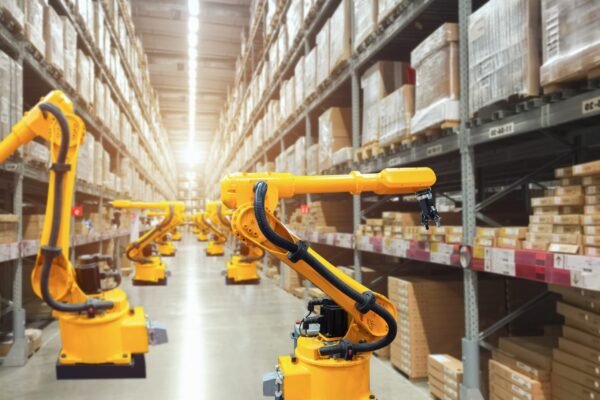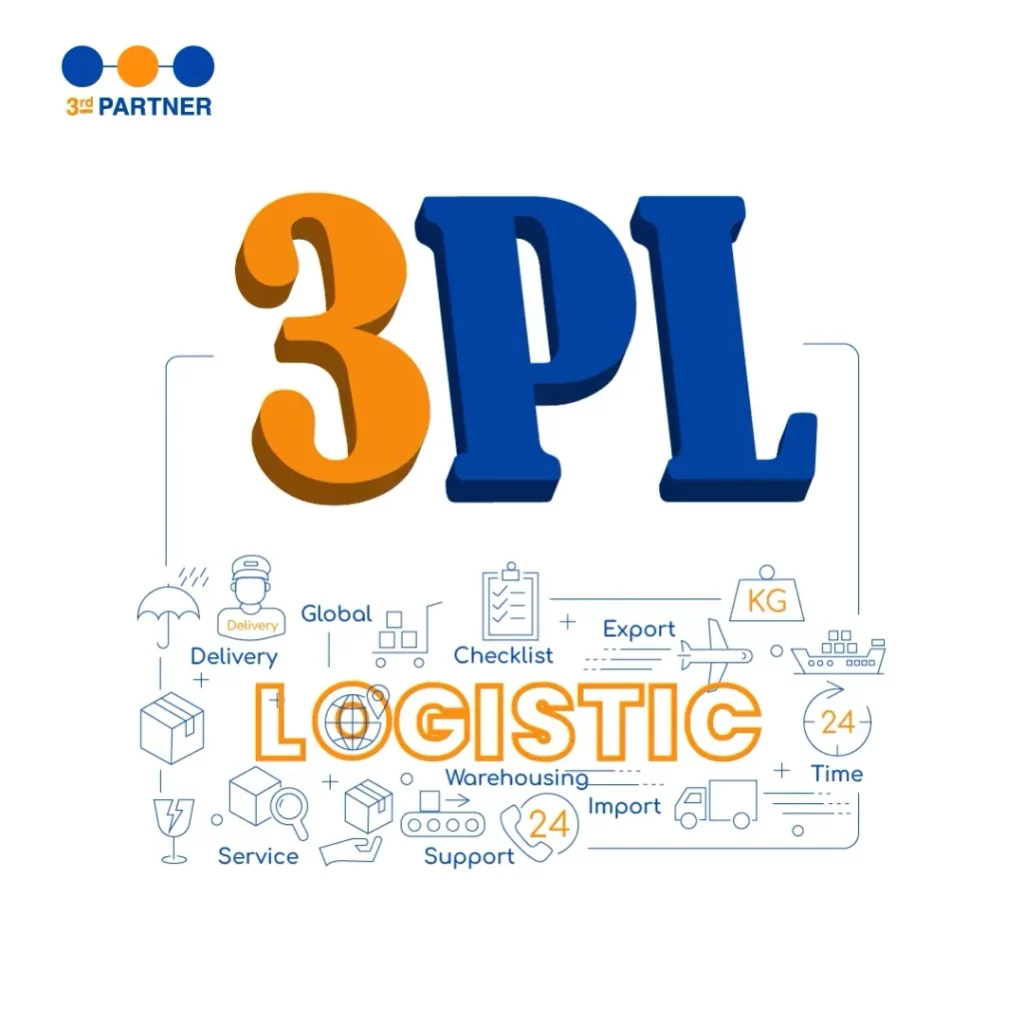Are you aware that the global pharmaceutical market is projected to experience significant growth, with spending expected to reach approximately $1.9 trillion by 2027?!
Pharmaceutical warehousing is crucial for ensuring medications stay safe and effective. Riyadh is at the forefront of this field, implementing advanced technologies that enhance storage and distribution. These innovations improve efficiency, maintain high-quality standards, and ensure regulatory compliance.
This article explores the fundamentals of pharma warehousing technology in Riyadh and their impact on the industry.
Pharma Warehousing Technology: Ensuring Quality, Safety, and Efficiency
A pharma warehouse is much more than a storage facility; it integrates several critical components to ensure efficient operations and product safety. Here are key elements of pharma warehousing:
- Temperature-controlled storage is essential, as many pharmaceuticals need specific temperature ranges to remain stable and effective. These warehouses must feature specialized storage areas equipped with temperature monitoring systems and backup power supplies.
- Quality control measures are vital, involving regular inspections, well-documented processes, and adherence to international standards to maintain product integrity.
- Advanced inventory management systems, such as barcode scanning and RFID technology, are employed to track product movement and availability, ensuring efficient order fulfillment and minimizing errors.
- Safe handling practices are crucial, requiring trained personnel to handle products carefully to prevent damage or contamination. This involves proper training, the use of personal protective equipment (PPE), and adherence to good manufacturing practices (GMP).
- Additionally, robust security measures, including access control systems, surveillance cameras, and alarm systems, are necessary to protect valuable inventory from theft, unauthorized access, and tampering, thereby ensuring the safety and security of pharmaceutical products.
The Ultimate Guide of Pharma Warehousing Technology Process
-
Receiving and Storing Pharmaceutical Products
The pharmaceutical warehousing process begins with the reception of products from manufacturers or suppliers. Each shipment undergoes a thorough inspection to check for any damage, tampering, or discrepancies. Following this, products are stored in designated areas based on their specific requirements, such as temperature control, expiration dates, and other critical criteria.
A robust inventory management system is essential in this phase. It ensures proper identification, labeling, and documentation of each product, making retrieval straightforward and preventing issues like stockouts or overstocking.
-
Inventory Management in Pharma Warehousing Technology
Effective inventory management is crucial in pharma warehousing to maintain optimal stock levels, prevent product expiration, and ensure an uninterrupted supply. Several techniques and tools are utilized:
- First-In, First-Out (FIFO) Rotation: This method ensures that the oldest stock is used first, minimizing the risk of product expiration.
- Batch and Lot Number Traceability: Unique identifiers are assigned to each product batch or lot, enabling accurate tracking and recall if necessary.
- Demand Forecasting: Advanced data analytics and forecasting techniques help warehouse managers predict demand more accurately and plan inventory accordingly.
- Efficient Space Utilization: Optimizing warehouse layout and storage systems maximizes space utilization and enhances picking and packing efficiency.
-
Order Processing and Dispatching
When an order is received, the warehouse processes it for picking, packing, and dispatching. This involves retrieving the necessary products from storage, verifying their accuracy, and securely packaging them for delivery.
Automation technologies, such as conveyor belts, robots, and barcode scanning, streamline the order processing and dispatching process. These technologies reduce errors and improve overall efficiency.
To meet the growing demand for faster order fulfillment, some pharma warehouses have implemented advanced picking systems like voice-directed picking or pick-to-light systems. These systems provide real-time instructions to warehouse personnel, guiding them through the most efficient picking routes and minimizing the time required to complete each order.
Furthermore, quality control checks are conducted at various stages to ensure order accuracy. This includes verifying the correct product, batch, and quantity, as well as conducting visual inspections for any signs of damage or tampering.
-
Ensuring Safety and Security
The safety and security of pharmaceutical products are paramount in a pharma warehouse. This involves implementing robust security measures, such as access control systems, surveillance cameras, and alarm systems, to protect valuable inventory from theft, unauthorized access, and tampering.
the warehousing process in pharma involves a series of meticulous steps designed to maintain the safety, quality, and integrity of pharmaceutical products. By leveraging advanced technologies and best practices, pharma warehousing technology can ensure efficient operations and reliable supply chain management.
The Importance of Pharma Warehousing Technology
Pharmaceutical warehousing is crucial for connecting manufacturers, distributors, healthcare providers, and patients, ensuring the availability of medicines in optimal condition and correct quantities.
By maintaining product integrity through precise storage conditions, minimizing supply chain disruptions, reducing costs, optimizing inventory management, and enhancing customer satisfaction, pharma warehousing plays a vital role in the healthcare supply chain.
- Maintaining Product Integrity: Prevents damage, contamination, and degradation through precise temperature and humidity control.
- Minimizing Supply Chain Disruptions: Ensures smooth operations and timely delivery, reducing delays for essential medications.
- Reducing Costs: Achieves cost savings through optimized inventory management and waste reduction techniques like FIFO “First-In, First-Out.” .
- Optimizing Inventory Management: Utilizes advanced systems like barcode scanning and RFID technology for precise tracking and stock control.
- Enhancing Customer Satisfaction: Ensures prompt and accurate delivery of medications, supporting efficient healthcare delivery.
Top Trends of Pharma Warehousing Technology
Advanced technology and innovation have successfully transformed pharma warehousing, yielding significant improvements in efficiency, accuracy, and cost-effectiveness.
-
Automation
Automation is one of the key advancements transforming pharma warehousing technology. Technologies such as robotic process automation (RPA), artificial intelligence (AI), and IoT-enabled devices have significantly improved various aspects of warehousing operations. These technologies enhance inventory management, streamline order processing, improve picking and packing accuracy, and reduce the reliance on manual labor.
For instance, robotic systems efficiently handle repetitive tasks like picking and replenishing stock, freeing up human resources for more value-added activities. Automating these processes not only boosts operational efficiency but also minimizes the risk of human errors, which is especially crucial in the pharmaceutical industry where precision is essential.
-
Machine Learning for Optimizing Global Supply Chains
Modern supply chains are rich with data that can provide critical insights for optimizing global networks. By leveraging machine learning technologies such as artificial intelligence (AI) within the realm of pharma warehousing technology, pharmaceutical companies can proactively manage data and enhance strategic sourcing relationships. This approach not only boosts customer satisfaction but also drives increased sales by making supply chains more efficient and responsive to market demands.
-
The Impact of Blockchain Technology
Blockchain technology is another exciting trend shaping the future of pharma warehousing. Blockchain offers enhanced traceability and transparency in the pharmaceutical supply chain, ensuring authenticity and reducing counterfeiting risks.
With blockchain, every transaction or movement of pharmaceutical products is recorded securely and immutably. This creates a transparent and auditable trail, making it easier to track the journey of drugs from manufacturer to consumer. By leveraging blockchain, pharma warehouses can identify and eliminate counterfeit drugs from the supply chain, thereby safeguarding patient safety. The International Data Corporation (IDC) forecasts that in 2023, 25% of office management and enterprise services leveraged blockchain to improve process accuracy and reduced expedite costs by 45%.
-
The Potential of Smart Warehousing
The concept of smart warehousing is another promising development in pharma warehousing technology. IoT devices and sensors enable real-time monitoring of temperature, humidity, and other environmental factors, ensuring optimal storage conditions for pharmaceutical products.
By utilizing IoT devices and sensors, pharma warehouses can proactively maintain the ideal storage conditions required for different drugs. This helps prevent spoilage, degradation, and loss of potency due to improper storage. Real-time monitoring allows for quick identification and correction of any deviations from desired conditions, ensuring the quality and efficacy of pharmaceutical products.
-
Artificial Intelligence
Artificial intelligence (AI) and predictive analytics are set to play a significant role in the future of pharma warehousing. AI-powered algorithms and predictive analytics can assist with demand forecasting, inventory optimization, and proactive issue resolution.
By analyzing historical data, AI algorithms can identify patterns and trends in demand, allowing pharma warehouses to optimize inventory levels and ensure the availability of critical drugs. Predictive analytics can also help pinpoint potential issues or bottlenecks in the supply chain, enabling proactive resolution before they affect operations. This proactive approach not only improves efficiency but also minimizes disruptions, ensuring the timely delivery of pharmaceutical products to patients.
-
3D Printing for a Patient-Centric Supply Chain
3D printing is becoming more important for making customized and local pharmaceutical products. By producing items closer to where they are needed, 3D printing helps cut down on shipping costs, reduces supply chain issues, and lowers environmental impact.
According to Mr. Matthias Heutger, Senior Vice President and Global Head of Innovation and Commercial Development at DHL, while 3D printing won’t fully replace traditional manufacturing, it will have a big impact on industries that need highly specialized and customized products.
In conclusion,
The latest pharma warehousing technology in Riyadh is revolutionizing the pharmaceutical industry. By embracing these advancements, warehouses can ensure the safety and quality of their products, improve operational efficiency, and achieve significant cost savings.
Partner with the “3rd Partner” Company, the leading provider of advanced pharma warehousing technology in Riyadh. Our comprehensive solutions, including state-of-the-art temperature control systems, ASRS, RFID technology, and blockchain integration, will transform your warehouse into a model of efficiency and reliability. Contact us today to learn more about how we can help you achieve operational excellence and regulatory compliance.











